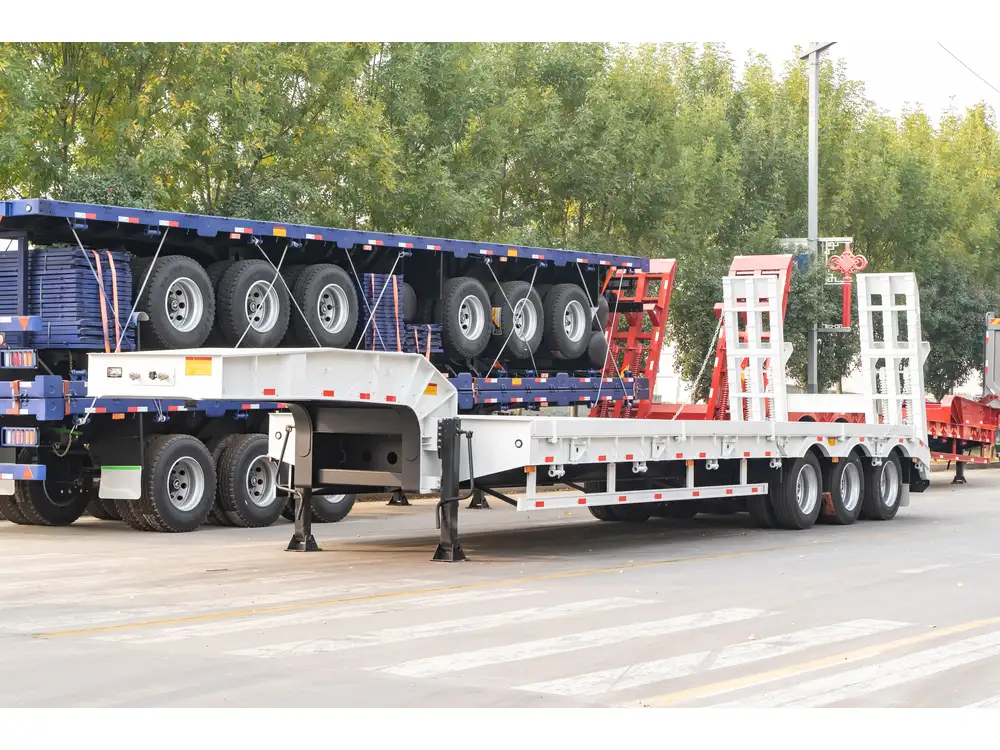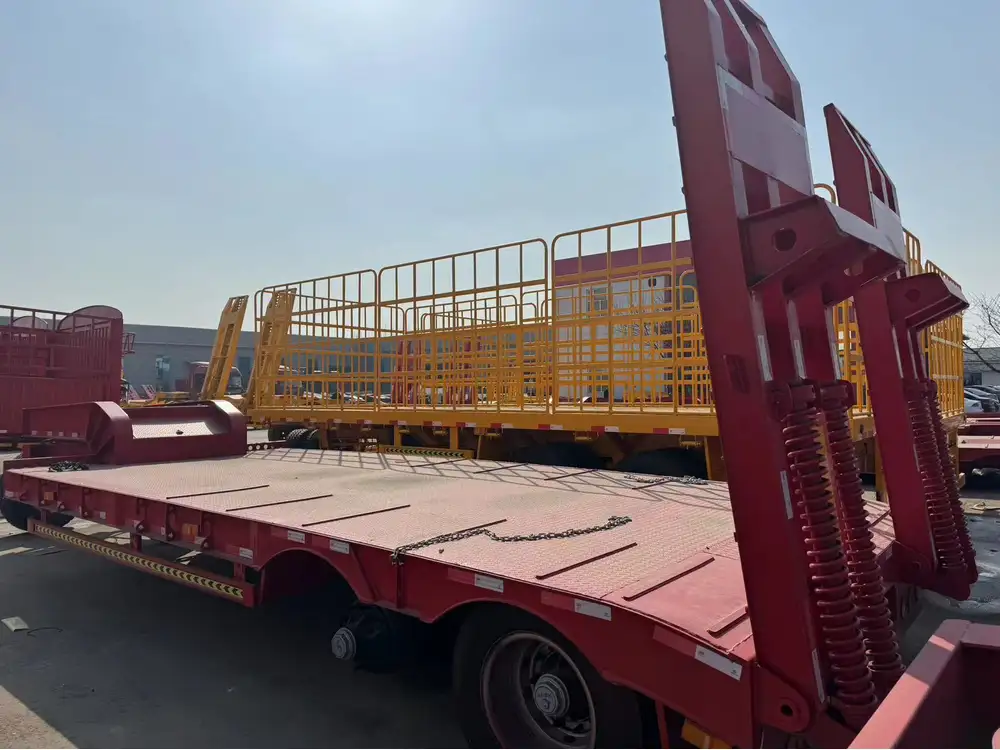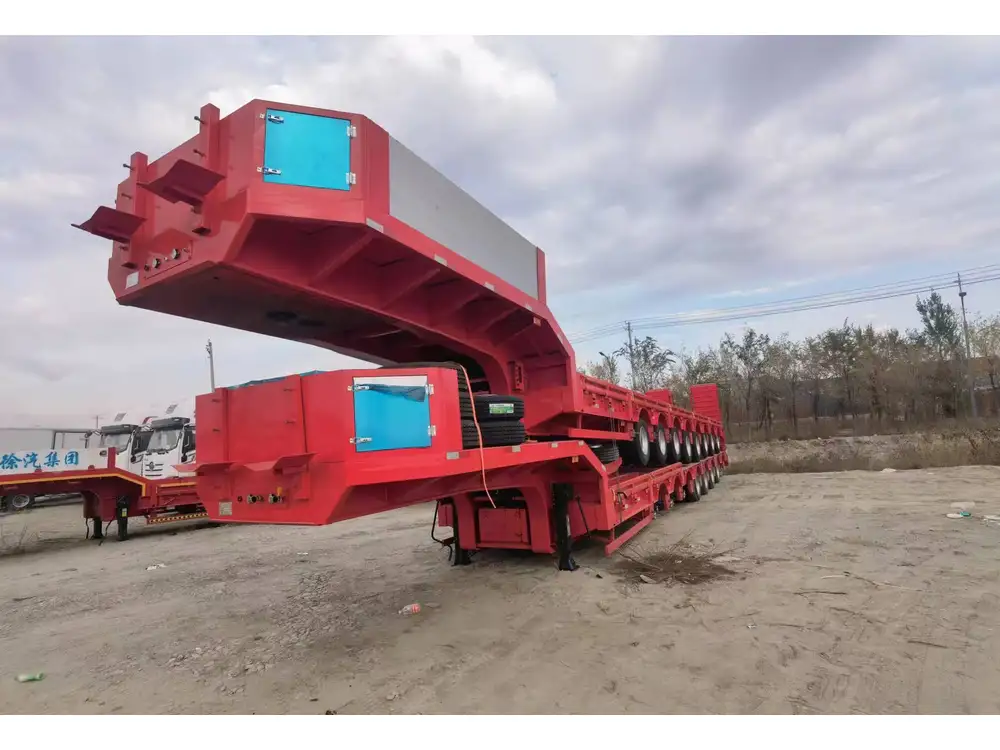Converting a flatbed trailer into a pontoon trailer is a creative and resourceful way to utilize existing equipment for boating purposes. This transformation not only saves money but also opens up new opportunities for recreation and adventure on the water. In this detailed guide, we will meticulously walk you through each step of the conversion process, addressing common challenges, essential materials, and tips for ensuring safety and functionality.
Understanding the Basics of Flatbed Trailers and Pontoon Boats
Before embarking on your conversion project, it is crucial to understand the fundamental differences between flatbed trailers and pontoon trailers.
| Feature | Flatbed Trailer | Pontoon Trailer |
|---|---|---|
| Design | Open platform with no sides | Floating platform with pontoons |
| Purpose | Transport goods and equipment | Launch and transport pontoon boats |
| Weight Distribution | Even weight distribution needed | Requires buoyancy; weight is critical |
| Structure | Steel or aluminum frame | Floating chambers for buoyancy |
| Load Capacity | Varies based on design | Limited to buoyancy and trailer specs |
Why Conversion is a Practical Option
- Cost Efficiency: Purchasing a new pontoon trailer can be expensive. By converting a flatbed trailer, not only do you save money, but you also utilize materials that are already in your possession.
- Customization: Tailoring the trailer’s features to your specific boat and needs makes this project uniquely yours.
- Sustainability: Repurposing existing equipment aligns with eco-friendly practices, reducing waste and the need for new materials.

Step-by-Step Guide to the Conversion Process
1. Assessing Your Flatbed Trailer
Before you initiate the modification process, conduct a thorough assessment of your flatbed trailer to ensure it meets the structural requirements for conversion.
- Weight Capacity: Confirm the maximum load capacity. Calculate the weight of your pontoon boat with equipment and passengers to ensure the trailer can handle it.
- Frame Condition: Examine the trailer for rust, cracks, or damage. Any corrosion can compromise safety, requiring repairs before beginning the conversion.
2. Gathering Necessary Materials and Tools
Once you’ve confirmed that your trailer is suitable for conversion, you need to gather the essential materials and tools.

Materials:
| Item | Purpose |
|---|---|
| Aluminum pontoons | Provide buoyancy for the carriage of the pontoon |
| Marine-grade plywood | Flooring and support structure for the trailer |
| Angle brackets | Attach pontoons securely to the trailer |
| Paint (marine-grade) | Protect exposed surfaces from water and corrosion |
| Bolts and screws | Fastening components together |
| Safety chains | Ensure the trailer remains secure during transportation |
Tools:
- Measuring tape
- Drill with metal and wood bits
- Wrenches and socket set
- Saw (for cutting wood and metal)
- Level
- Safety gear (gloves, goggles, etc.)
3. Designing the Pontoon Assembly
The design phase is pivotal to ensure stability and functionality. Here’s how to approach this stage.

Weight Distribution
Ensure a balanced design. Distributing the weight evenly across both sides will prevent tipping during transport. Follow these guidelines:
- Center the pontoons evenly on the trailer’s frame.
- Position additional equipment or gear in a way that maintains balance.
Supports and Framework
Consider reinforcement. Using marine-grade plywood, create a support structure across the flatbed that will hold the pontoons securely. This element acts as the bridge between the flatbed and the pontoons.
4. Attaching the Pontoons
After finalizing the design, it’s time to attach the pontoons.
Positioning: Place the pontoons on the trailer. Ensure they are parallel to each other and aligned with the trailer.
Drilling Holes: Use a drill to create holes through the pontoons and into the flatbed trailer for your fasteners. Ensure holes are accordingly spaced to maintain structural integrity.
Securing: Use angle brackets to secure the pontoons to the flatbed frame. This step is essential for stability and safety.
Double-check Alignment: Utilize a level to ensure both pontoons are sitting flat.

5. Constructing the Decking
The decking should be durable and resistant to water damage.
Cutting Marine-grade Plywood: Measure and cut the marine-grade plywood to size, ensuring it fits securely over the pontoons.
Securing the Decking: Fasten the plywood to the pontoons using screws, making sure it is both tightly secured and waterproof.
6. Finishing Touches
Aesthetics and protection are equally important.
- Painting: Apply marine-grade paint to all exposed surfaces to prevent corrosion and wear.
- Safety Chains: Install safety chains for added security during transport to comply with road regulations.
- Additional Equipment: Add any desired accessories such as lights, storage compartments, or winches.
7. Testing the Trailer
Before hitting the road, conduct a thorough test of your modified trailer.
- Water Test: Place your trailer in a shallow water body to check for buoyancy and stability.
- Road Test: Ensure that your trailer handles adequately while being towed.

Troubleshooting Common Issues
Stability Problems
If your trailer is unstable on the water, consider redistributing weight or reevaluating your pontoons’ placement. Sometimes an additional support or floatation device can help resolve these issues.
Weight Limit Exceeded
Always check the combined weight of your trailer, pontoons, and boat. If you exceed the rated limit, consider modifying either the weight load or upgrading to a more robust trailer.

Corrosion and Wear
If the paint wears off or the materials degrade, inspect for signs of rust and reapply paint or structural supports as necessary.
Safety Measures and Regulations
Converting a flatbed trailer to a pontoon trailer is not just about design; safety is crucial.
- Legal Compliance: Check local regulations regarding trailer conversions to ensure you meet all legal requirements for towing and water activities.
- Safety Equipment: Equip your trailer with adequate safety gear, including flotation devices and first aid kits, to ensure safe boating adventures.
Useful Tips for Success
- Plan Ahead: Spend ample time in the planning phase. Mistakes early on can lead to costly modifications later.
- Stay Organized: Keep your workspace clean and organized to avoid losing tools and materials during construction.
- Consult Experts: If unsure about certain aspects of the conversion, don’t hesitate to consult a professional for advice.

Conclusion: Embrace the Adventure
Transforming a flatbed trailer into a pontoon trailer opens up a world of possibilities for your boating adventures. With careful planning, detailed execution, and an eye for safety, you can create a functional, customized trailer that fits your boating needs perfectly. By embracing this project, you not only demonstrate resourcefulness but also enhance your recreational activities on the water.
Your newly converted pontoon trailer is now ready for countless weekends of fun, relaxation, and adventure with family and friends. Enjoy the journey ahead!



